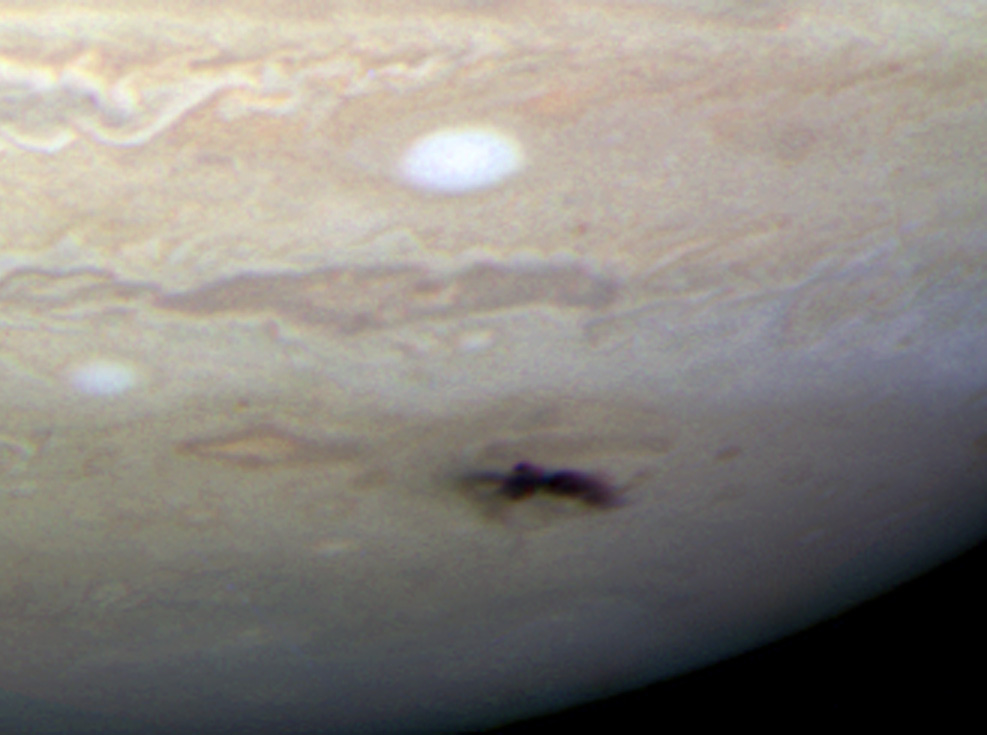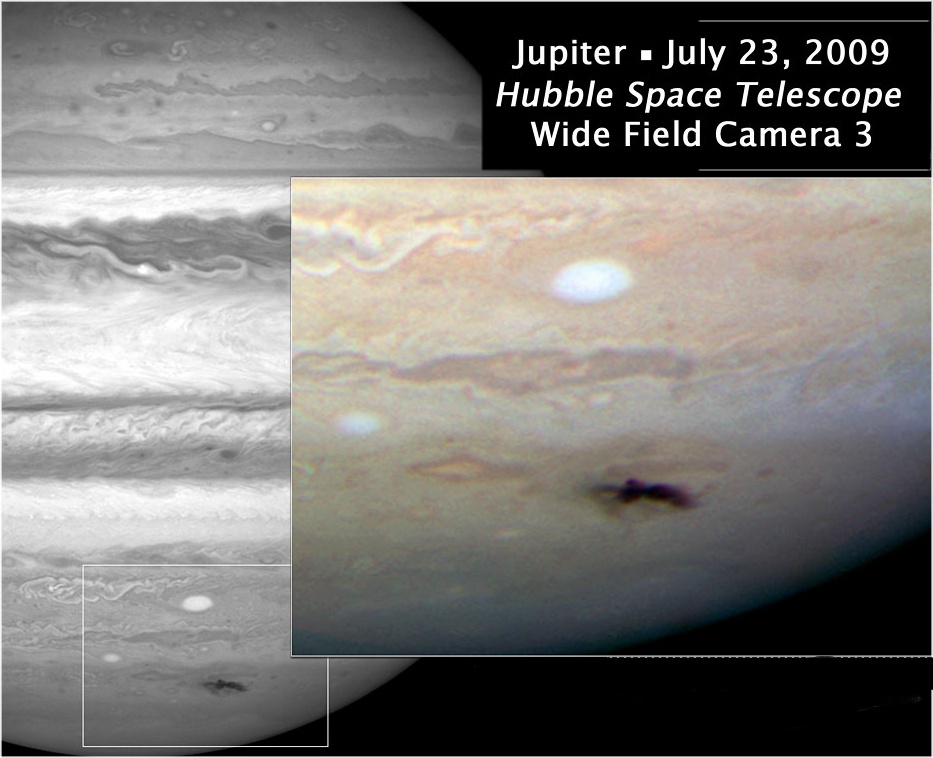This Hubble picture, taken on 23 July, is the sharpest visible-light picture taken of the dark spot and is Hubble's first observation following its repair and upgrade in May. Observations were taken with Hubble's new camera, the Wide Field Camera 3 (WFC3). The WFC3 was installed in May and is not yet fully calibrated so astronomers can obtain celestial images like this but it isn't up to full capability yet.
The dark spot, evidence of an impact, was created when a small object (small in the cosmic sense - it was a comet or an asteroid) entered Jupiter's atmosphere and disintegrated. The only other time in history such a feature has witnessed was comet Shoemaker Levy 9 in July of 1994.

Closeup view of the new dark spot on Jupiter taken with Hubble's Wide Field Camera 3 on 23 July 2009. Credit: NASA, ESA, and H. Hammel (Space Science Institute, Boulder, Colorado) and the Jupiter Comet Impact Team
Amy Simon-Miller of NASA's Goddard Space Flight Center estimated that, by the size of the new feature, whatever slammed into Jupiter was the diameter of half a dozen football fields, resulting in an explosion on Jupiter thousands of times more powerful than the comet or asteroid that exploded over the Tunguska River Valley in Siberia in June 1908.

Image credit: NASA, ESA, and H. Hammel (Space Science Institute, Boulder, Colo.), and the Jupiter Comet Impact Team.





Comments